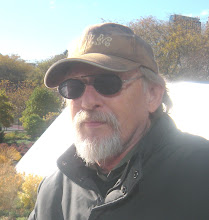Essential Books
on the Tai Chi Classics
I’m
recommending some published works on the Tai Chi Classics: early writings about
the essentials of Tai Chi Ch’uan. These have been translated various times by
different authors and can be taken as poetry, as inspirational sayings, as a
guide to the essential elements of the form(s), or as an introduction to
Chinese literature, especially to the Tao Te Ching and the I Ching.
I have referenced one of these before, The T’ai chi Classics, translated
with commentary by Waysun Liao. This is one of my favorite books, giving
historical background on Tai Chi, explaining in detail the concepts of Qi and Jing,
translating and commenting on the classics, and finally illustrating and
describing the Yang Long Form with emphasis on breathing and meditation while
moving.
Recently I
picked up a copy of The Essence of T’ai Chi Ch’uan, The Literary Tradition by
Benjamin Lo. Lo was a student of Cheng Man-ch’ing and gave many workshops in
the Professor’s Short Form. His translation is presented as poetic and includes
a chapter by Cheng Man-ch’ing called “Song of Form and Function”. The Professor’s
writings are always worth delving into and here, talking abut the Thirteen
Postures, he is both poetic and eloquent, for instance, “The body is like a
floating cloud….The whole body is a hand and the hand is not a hand. The mind
must stay in the place it should be.”
On my want list is The Taijiquan Classics: An Annotated Translation by Barbara Davis and Chen Wei-Ming. The blurb says, “…this book explores the fundamental ideas and
what they mean to practitioners, students, and scholars. It also incorporates
newly discovered sources that address the history of taijiquan and newly
translated commentaries by Chen Weiming.” Sounds like a must-read to me.
What are the classics? There are three treatises by Grand Master Chang San-feng, Master Wong Chung-yua, and Master Wu Yu-hsiang. The first dates to around 1200 CE, the second to around 1600 CE, and the third to the 19th Century. In addition, in Lo’s book are “Song of the Thirteen Postures” and “Song of Hand-pushing”, both by unknown authors, and two treatises by Li I-yu and one by Yang Cheng-fu.
It
is from these classics that the 13 essentials are derived. More about that is
the next blog entry.





